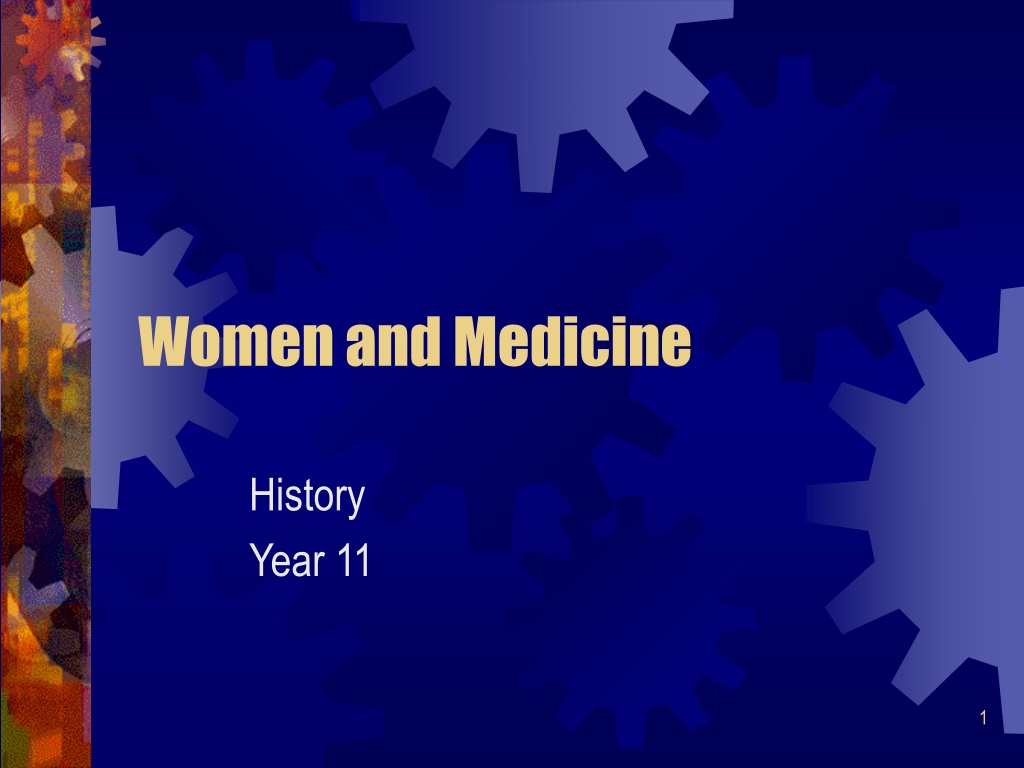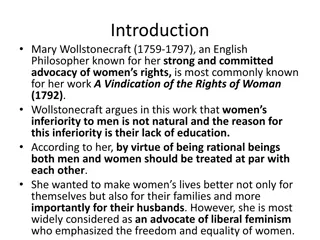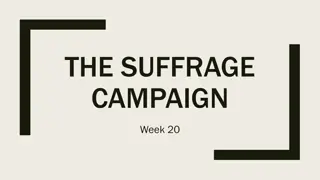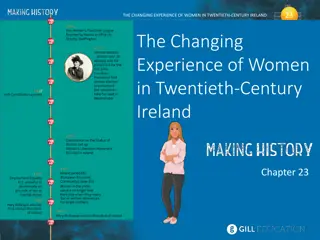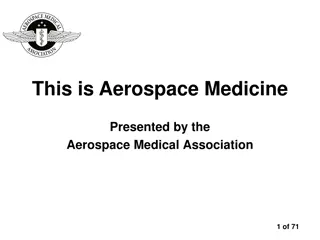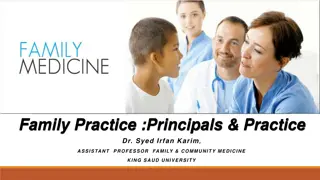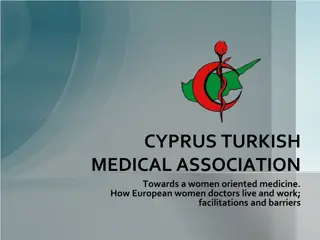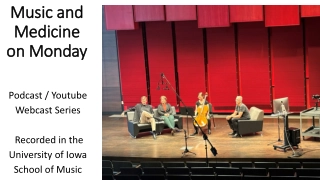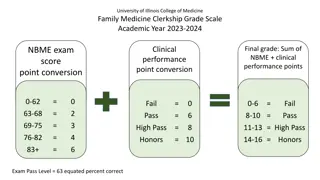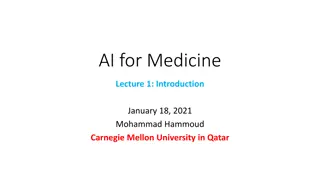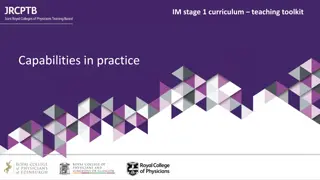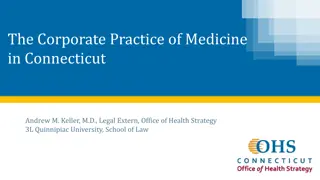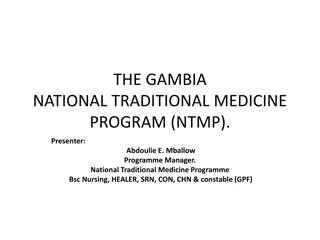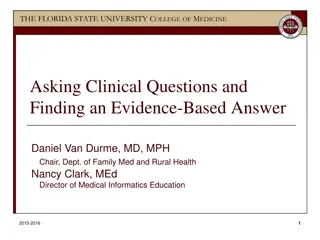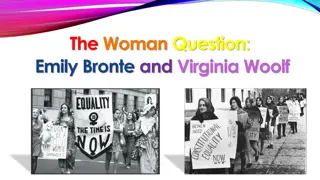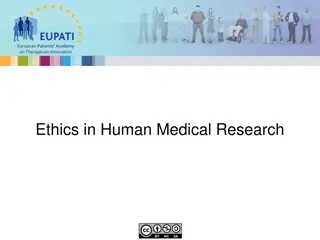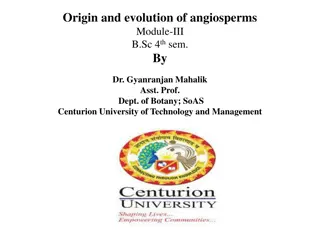Evolution of Women in Medicine: A Historical Perspective
Explore the challenging journey of women in medicine throughout history, from being deemed unsuitable due to societal attitudes to their acceptance as medical practitioners. Discover pioneering individuals like Dr. James Barry, who defied norms to pursue a career in medicine. Uncover the struggles and triumphs that paved the way for women to establish their rightful place in the medical field today.
Download Presentation

Please find below an Image/Link to download the presentation.
The content on the website is provided AS IS for your information and personal use only. It may not be sold, licensed, or shared on other websites without obtaining consent from the author. Download presentation by click this link. If you encounter any issues during the download, it is possible that the publisher has removed the file from their server.
E N D
Presentation Transcript
Women and Medicine History Year 11 1
Attitudes " women are neither physically nor mentally strong enough to cope with the endless medical round their delicate sensibilities surely equip them to be the handmaids of doctors " 2
Back in the mid 19th century, middle class women were encouraged to live a domesticated life, persuaded that their delicacies made them suitable only as helpers and handmaids in a working environment. There were no opportunities to study and practise medicine and it took hard work and years of struggle to establish the position of women in medicine that we see today. 3
Not always the case! This Victorian perspective of women being unsuitable for the field of medicine was not always the accepted viewpoint; women have been equal to men in areas of therapy and care throughout history and in pre-patriarchal times were considered the natural healers. 5
Their acceptance in modern Western medicine began with their entrance into medical education; a long and arduous struggle by several determined pioneers, the history of whom is deeply connected to the medical school in Edinburgh. 6
Dr James Barry It was at the University of Edinburgh that a bizarre story is set. The Medical Faculty was where the late James Barry began his, or rather her, medical training as early as 1812. 7
This student, whose real name is unknown, was so keen to study medicine at a time when the social situation and politics wouldn t allow it, that she decided to train and practise her whole life masquerading as a man! She was successful in her field and respected as a surgeon in the army. It was not until her death that her true identity as a woman was discovered and due to the outlandish nature of the story, her achievements as a doctor have been somewhat overshadowed. 8
Elizabeth Blackwell (1821 Elizabeth Blackwell (1821- -1910) 1910) For thousands of years the medical professions were reserved almost exclusively for men. Since the 17th century it had become more difficult for women to be involved in medicine. The wise women of the Middles Ages disappeared and midwifery steadily became a job for doctors. 9
As is often the case, it was one or two determined individuals who were prepared to force openings for themselves and then for others, one of these was Elizabeth Blackwell. 11
Who was Elizabeth Blackwell? Who was Elizabeth Blackwell? Elizabeth Blackwell was an American teacher who taught herself basic science and then trained through private instruction at the Charleston Medical School in New York. She was awarded the M.D. degree in 1849 from Geneva Medical College in New York, and was the first woman to become a modern doctor. 12
Once qualified she still faced opposition and was barred from working at the New York City Hospitals, so in 1857 she set up her own practice, staffed entirely by women. The success of this practice proved that a woman could run an efficient medical service. 13
Move to London In 1869 Blackwell moved to London to found the London School of Medicine for Women. Elizabeth Blackwell became a doctor through her own efforts and expertise. Despite the resistance of fellow male students and doctors, she graduated at the very top of her class. 15
Elizabeth Blackwell set a precedent for women doctors in the modern world. On a visit to England in 1859 she met Elizabeth Garrett who went on to become the first woman doctor in Britain and also a pioneer of women's medicine in Europe. 16
Elizabeth Garrett Anderson (1836 Elizabeth Garrett Anderson (1836- - 1917) 1917) Elizabeth Garrett Anderson, like her role model Elizabeth Blackwell, did much to encourage the acceptance of women into the male-dominated medical world. 18
Who was Elizabeth Garrett Who was Elizabeth Garrett Anderson? Anderson? In 1859, at the age of 24, Anderson met the American doctor, Elizabeth Blackwell. The meeting inspired her to train as a nurse. She trained privately and was accepted into the British Society of Apothecaries in 1865. 19
Society of Apothecaries The acceptance of Anderson into the Society of Apothecaries established a precedent. Despite this though, the Society then changed its rules to stop other women becoming fellow members. 20
However, this made Anderson even more determined to go further. She applied to British universities to train as a doctor, but was turned down in every case. Undeterred, she went to France and received the M.D. degree from the University of Paris in 1870. She returned to London and set up practice. 21
How did Anderson change medicine How did Anderson change medicine in Britain? in Britain? Elizabeth Garrett Anderson was the first British woman to qualify as a doctor. In 1874 she established the London School of Medicine for Women. Her determination paved the way for other women. In 1876 an Act of Parliament was passed which permitted women to enter all of the medical professions. 22
Even today one of the leading hospitals for women in London is named after Anderson as a tribute to her part in breaking down prejudice in the medical profession. One of the arguments that the Suffragettes were able to use in the early 20th century was that women, as doctors, could be trusted with lives, yet were excluded from the basic right to vote. 23
Bedlam Bedlam It is only within the last century that doctors have begun to understand how to treat people with mental illness. Two hundred and fifty years ago they were simply labelled as 'lunatics'. The word itself came from the Latin word for the moon luna'. It was believed that the behaviour of lunatics was affected by the phases of the moon. The most famous of the hospitals for lunatics was St Mary of Bethlehem in London, or 'Bedlam'. 25
Sadly, Bedlam was regarded as a peculiar form of entertainment. For a penny visitors could peer into the cells, sometimes teasing the poor sufferers, for amusement. Treatment was little more than torture. Patients were usually chained up all day, or kept quiet with opium, plunged into cold baths. Sometimes they had their blood let or were given laxatives and made to vomit. 27
Dr. Isaac Hawes a 17th century doctor wrote: 'Nothing is more necessary for the recovery of lunatics than forcing them to respect fear. This is why maniacs recover much sooner if they are treated with torture in hovels (slums) instead of with medicines'. Bedlam Hospital is now the Maudsley Hospital. 28
Bedlam Site http://www.museumoflondon.org.uk/archive/exhi bits/bedlam/f_bed.htm 29
Homework Why was it unseemly for a woman to study medicine? Write a paragraph, or two, on each of the following women: Elizabeth Garrett Anderson Elizabeth Blackwell 30
This powerpoint was kindly donated to www.worldofteaching.com http://www.worldofteaching.com is home to over a thousand powerpoints submitted by teachers. This is a completely free site and requires no registration. Please visit and I hope it will help in your teaching. 31
